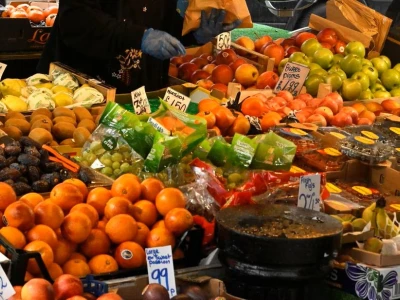
Soaring coffee prices foretell a financial grind
Roughly half the land best suited to produce arabica won’t qualify as such by 2050.
NEW YORK, July 30(Reuters Breakingviews) - The coffee market has experienced quite a jolt. Robusta bean prices have come in slightly, but remain near record highs. Espresso and flat-white lovers may not be getting bitter just yet, but rising demand and climate-related effects are brewing trouble for the $200 billion, opens new tab industry.
Java demand is rising internationally as higher incomes attract new drinkers. To satisfy baristas and supermarkets, farmers cultivate two varieties. Arabica is more popular, expensive and finicky. Its plants grow at least 1,000 meters above sea level, in cool and rainy areas. Robusta beans are hardier, but generally regarded as less tasty and thus relegated to instant coffee and blends.
Supply can’t keep up, however. Vietnam produces about 40% of the world’s robusta, and a drought is hitting hard. Coffee trader Volcafe estimates the country could harvest its smallest crop in 13 years, leading to a shortfall of 4.6 million 60-kilogram bags. As a result, September robusta contracts nearly hit $5,000 per metric ton in early July before coming down to about $4,300 per ton on hopes for a good Brazilian crop. Arabica prices hit their highest level in a decade earlier this year.
Starbucks customers shouldn’t be suffering much. Some products are quickly affected by commodity prices. Petrol, for one, swings with the oil market largely because crude accounts for about half the charge at the pump. In a $5 cup of joe, however, the unroasted beans cost about 7 cents. Consumers of powdered and crystallized alternatives feel the pinch sooner.
Under basic economic theory, shortfalls encourage more production. And big trading houses are indeed investing in new plantations. Smaller growers also tend to respond better to price signals than with, say, cocoa because there’s less government interference and co-ops have good links to exporters. Considering that it can take four years for coffee plants to reach maturity, a glut might even develop.
Climate change looms large, however. Roughly half the land best suited to produce arabica won’t qualify as such by 2050. Climbing temperatures chase farmers higher up mountains to cooler fields and more unpredictable precipitation. Such pressures are already prompting switches to robusta.
These beans are vulnerable, too, evidenced by Vietnam’s recent struggles. The World Coffee Research industry trade group predicts that in less than two decades demand will outstrip supply by 35 million bags, opens new tab, or almost half of current production. The business is destined to become a real financial grind.
The price of robusta coffee one-month futures was $4,290 per ton on the LIFFE exchange on July 30. It had reached as high as $4,781 per ton on July 17, about double its level a year earlier.




